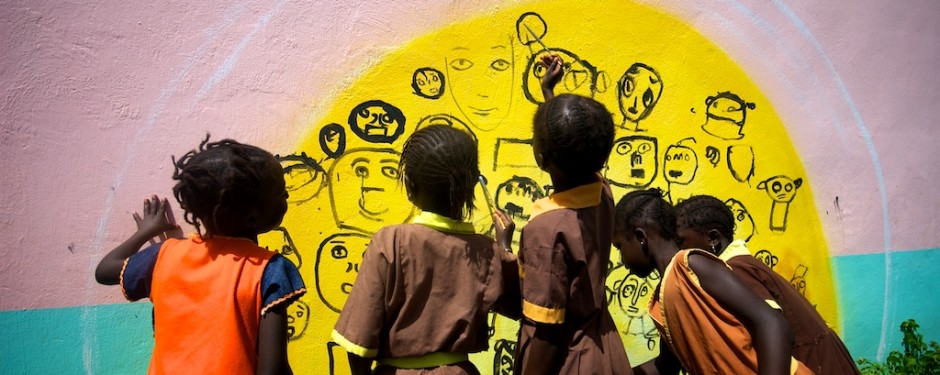During the fall of 2008 Renée Rutten has executed a small survey during her internship to discover wether there are possibilities to use the technology which is promoted by Water4Life in Gambia.
Now it is clear that the circumstances in the villages are such that use of the water purifiers will improve the quality of the drinking water. It is necessary to do further look into the possibilities to actually introduce the purifiers in a sustainable manner.
Progress report by Renée Rutten:
Kubuneh Village is a village in Gambia consisting out of about 60 compounds. The inhabitants are friendly and their clothes are colourful. In this village I completed my internship of four months for my education to become nurse. My home was a clay hut with a room of cane in which I lived, just like the local people. It was primitive and it was as a white person not possible to get safe drinking water within the village. If I would drink the water of the Gambian citizens, it would cause illness. That’s why I bought bottles of water in the capital and later on I even started using the water purifier that is being used by Water4Life.
The difficulties of fetching safe drinking water were known before my departure. Together with the chairman of Water4Life, Alex Vrinzen, we brainstormed to deal with this problem for the local people. He was very eager to know the Gambian people deal with sanitation and how they fetch drinking water. On the compounds of Kubuneh Village I started my search for the answers to these questions.
With the waterpurifier under my arms, I went to the village, together with my neighbour Lilian who acted as an interpretor. The large shiny appliance made a big impression on the people. In total I visited 30 compounds. I asked how many people live on the compound, in which way they fetch their drinking water and which sanitary facilities are available. The families are large and with pride they showed me their toiler, shower and cooking area. Some didn’t have a toilet or shower and used the facilities of the neighbours.
In the village a water pump is available. The distance to the pump however is for some families too far to get fresch drinking water daily. That’s why some families dug their own well on their compound. With the help of a stone on a wire, I measured the depth of the well. On average these are 7.5 meters deep. Some people cover the well every night, others only do this during the rainy season. Also the quality of the water of the various wells differed. Some had visually more impurities in the water then others.
The storage of the water was within most homes the same, namely in a clay pot. Over the earthenware pots they put a towel, in order to filter the sand out of the water during filling of the pot. In the pot the water stays cool because of the porous properties. Water evaporates slowly on the outer surface of the pot which extracts heat from the pot and the water inside. This causes the temperature of the water to be a few degrees lower then the surroundings. When people want to drink they use a cup which is kept next to the pot. Some families have two pots which is also called “local fridge”. One pot is for adults, the other one for the children. The difference is made because children cary more dirt / diseases. Only some people admitted that the water causes illness sometimes. Mostly people are not aware that contaminated water may be the cause of illness.
Besides visits to the local villagers, I also made contact with the local administration and governmental representatives. Amongst others I met the governor of the western region at a meeting about malaria. During this meeting I got the opportunity to give a presenation about the waterfilters and the importance of safe drinking water. Both the governor and the present local people were enthusiastic and recognized the importance of the water purifiers. Through the governor I got in contact with the minister of water supplies. They both indicated that obtaining water is a problem in several villages in Gambia. It was more difficult to persuade the director of WHO-Gambia. He first would like to learn more about the technical details of the functioning of the filter and why this purifier is the best. Now people learn to first boil the water, then cool it down and then drink it.
Before people can switch over to the use of a water purifier a useful project proposal must be made. The development of this plan will be done during my graduation period which will start in february 2009. I will use my observations and I will found the boundary conditions for safe water usage on literature and expert interviews in Gambia. Hopefully this will be the start for the local people in Gamia to get access to safe drinking water.
Next year in March you will read more about my project!

